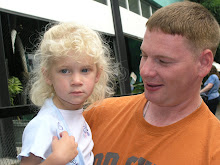this path, this road that is one perfect
straight line even if it goes around the
world through heat and fog and rain
and snow and it's my life I keep
thinking. It's my life.
- Deborah Keenan,
from "Small History."
found in the Feb.
2009 issue of Oprah.
Thursday, June 4, 2009
Wednesday, June 3, 2009
"All winners are accomplished quitters in that they have perfected the art
of quitting everything that is holding them back from whatever it is they
set out to do."
Ben Glass
http://theworkplacebully.blogspot.com/2009/06/better-to-leave-than-stay.html
of quitting everything that is holding them back from whatever it is they
set out to do."
Ben Glass
http://theworkplacebully.blogspot.com/2009/06/better-to-leave-than-stay.html
Idaho City, Idaho
At the corner of Main and Commercial
a lanky mongrel jogs, stiff-legged
past the leaning culvert.
At the corner of School and Main
the charred remains of a second-hand store,
plastered with license plates,
waits for time to heal the burns.
At the corner of Montgomery and Commercial
inside a "censibly-priced" gift shop
lies a 1964 issue of LIFE, with a
lack and white picture of Robert Mcnamara,
hatless, scaling the Matterhorn in a snowstorm.
In another shop at the corner of Myers and Montgomery
on a table inside the front door
lies a heart-shaped jewelry box,
coated with seashells, but for the rim, which is
ringed with the vertebrae of dead fish.
At the corner of Montgomery and Walula
a Harley rumbles by, the long black braid of the
passenger grazing the revolving rear wheel.
At the corner of Walula and Duck Walk
blistering sun rays drill into skin
caressed by a cool breeze.
At the corner of Bear Run and Main
a black cat silhouettes its way
across the sunlit street
to the safety of city hall
Cars creep past, not even fast enough
to raise a little dust, that
last remnants of pioneers
and teradactys;
two small boys stroll down
the wooden sidewalk.
an old man, feet dragging
heads for his noon siesta;
and, with blinding speed,
light ricochets from light
At the corner of Main and Wall.
Leonard Nolt
Sept 27, 1997
BLACK BOX
It used to be that when an airplane crashed, the one part of the plane that always survived was the Black Box. No matter how bad the disaster; an explosion five miles up, a fiery mid-air collision near a busy terminal, or a badly screwed up landing, the Black Box stayed intact.
Inside the Black Box were high tech instruments that recorded valuable information about the function of the plane prior to and at the time of the accident; control settings, instrument measurements, and the conversation of the crew.
After an air disaster, agents from the National Transportation Safety Board or the Federal Aviation Agency retrieved the Black Box. They always got it, sooner or later, even if it was mired in a snake-infested swamp or congealed in a tortured mass of scorched metal.
One day at a committee meeting late in the 21st century, someone made the suggestion that since the Black Box always survived an air disaster, and since we want the passengers and crew to survive also, why not just put them in the Black Box? There was a shocked silence around the table. Like all great ideas it was simple and beautiful.
Some one pointed out that if people were placed in the Black Box, those precise instruments that recorded valuable information about the plane's performance would have to go. After all, the Black Box had a limited amount of space. No one paid attention. What mattered was saving the souls aboard the plane.
From that time on passengers and crew were assigned seats in the Black Box. So if the power went off at 30,000 feet, the drone of the engines turned to an ominous silence, and green oxygen masks dangled like the webs of poisonous spiders in front of each face, there was no panic. People just got the same feelings they would get at the beginning of a roller coaster ride.
Later, when rescue crews arrived at the unrecognizable crumpled mass of broken metal that used to be the latest Boeing or Airbus, retrieved the Black Box, and pried open the door, people would file out. They would be smiling and laughing, perhaps a little disheveled, but unhurt. Strangers would be joking with each other; seventy-eight, forty-one, and seventeen year olds; children holding hands, the Carosellies, the Schultzes, and the Zabreskies, from Toronto, El Paso, and Albany.
Schedules would be disrupted, of course. Grandpa Rodriquez might be late for Tony's graduation. Once Senator Boone missed an important vote in congress and the airline's insurance company had to pay dearly. But no one was killed or injured.
It's true that there has been no reduction in the number of crashes since statistical information about the accidents is no longer available. But that doesn't seem very important, now that no one gets hurt. Some have actually suggested that one of the reasons people fly is because of the possibility of a crash, like going to the hockey game to see the fights, but that's ridiculous, of course.
It's been nearly half a century since anyone has died in an accident. After the tremendous success of Black Boxes in airplanes, manufacturers began installing them in cars, trains, bicycles, and baby carriages. Laws require bungee jumpers and hang gliders to have Black Boxes, but there are unconfirmed rumors that some people don't always use them. Once, many years ago, a manufacturer tried to ship some ATVs without Black Boxes. He still serving time.
Children and teenagers go to school in their own personal Black Boxes. As you can imagine it prevents many of the problems that go with unsupervised human interactions. Like a mother's arms or a church community, the Black Box has become the perfect symbol of complete security.
Scientists are working on Black Boxes for riparian areas, the ozone layer, and California Condors. Soon everyone and all creation will be safe. It's only a matter of time.
Leonard Nolt
Subscribe to:
Comments (Atom)



